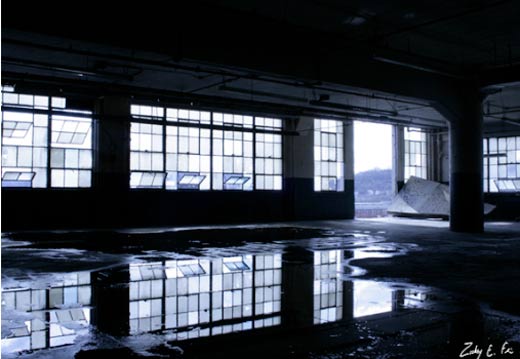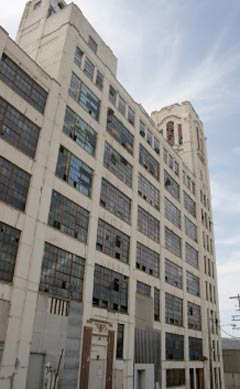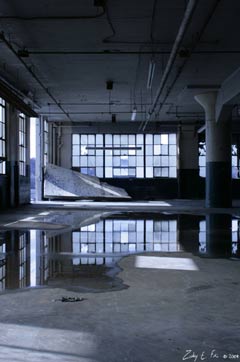
If you have ever driven along Interstate 75 through Camp Washington, you have almost assuredly been greeted by one of the most visible pieces of Cincinnati history laying vacant and in disrepair.
Originally built in 1929, the Crosley Building was the headquarters for the Powel Crosley Jr. empire, and produced the first mass-produced table-top radio, the first non-electric refrigerator, and the first mass-produced economy car.
The majestic ten-story building, designed by famous Cincinnati architect Samuel Hannaford & Sons, has seen a variety of tenants since the
Crosley Corporation sold the structure in the '70s.

Given the building’s prominent location along I-75, its close proximity to rail, downtown, the airport and its inclusion in the recent
GO Cincinnati economic development report, the building has been deemed a high priority redevelopment spot by the City of Cincinnati.
The site sits on roughly one acre of land with nearly 300,000 square feet of space within the Crosley Building. Previously, the city had identified the site as a possible redevelopment for a research/technical facility that would continue the legacy of the Crosley family.
The city is now looking at the site in a different light as they hope to engage the private market. “We would really have to sit down with the private market to figure out the redevelopment of the site,” says the Senior Development Officer with the Department of Community Development at the City of Cincinnati, Sam Stephens.
Most recently the City of Cincinnati included the redevelopment of the Crosley Building in its stimulus request asking for $4.3 million. Additionally, there is a formal request sent to Congress for an earmark in the FY 2010 budget. Stephens says this is the first indication the city is interested in moving into the Camp Washington area for redevelopment purposes. There exists an unprecedented opportunity to apply for additional available money.
In addition to the redevelopment of the location, a remediation process will most likely be needed to clean up the site from its environmental hazards. Stephens mentions that programs like the Clean Ohio Fund and the Job Ready Sites offer more public resources for the cleanup of sites like this than ever before.

As the City progresses in its efforts to prep the site for redevelopment, it plans to continue to engage the
Camp Washington Community Council who helped identify the building as a primary redevelopment site in the neighborhood.
Stephens says that Camp Washington is currently in the process of finalizing an urban renewal plan for the neighborhood in which the redevelopment of the building plays a prominent role. The plan is scheduled for completion over the summer following additional community input. From there, the plan could go to the Planning Commission and then City Council.
“It’s very early on this project and not all of the information is there, quite yet,” says Stephens. “We are doing what we can to maintain that building and its integrity for the city and the neighborhood of Camp Washington.”
Writer:
Randy SimesSource: Sam Stephens, senior development office, City of Cincinnati Department of Community Development
Photography by Zachary Fein
Enjoy this story?
Sign up for free solutions-based reporting in your inbox each week.